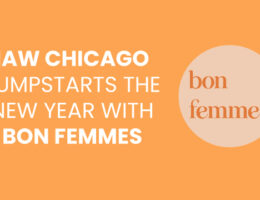Your brand is the typical public face of your business. Your clients judge you based on your brand since it is the only aspect that projects your business identity and defines who you are to your customers and partners. A brand style is the primary visual aspect of your company’s branding though it extends to the grammar, word usage, point of view, and tone. It is a holistic set of standards and policies that define your branding.
By creating a brand style, you ensure that all of your company information that is published remains consistent, recognizable, polished, and more enjoyable. Apart from fostering consistency in your content, a brand style also ensures quality and professionalism is always adhered to while dealing with company information. Your brand style may include visual elements, writing tone, color palette, formatting, and imagery/photography.

How to Develop Your Own Style Guide
Keep your clients in mind when designing your brand style. Ask yourself who your clients are and how they spend their time. Just like your brand, your style guide should resonate well with your clients.
Pick Your Color Palette and Stick with It
The choice of your color speaks to a lot of things about your brand. Sometimes, the colors may shift from one designer to another or from one program to another. However, it’s essential to provide the HEX code for your standard web use as well as the CMYK values for all printed materials.
Sometimes shifting from CMYK to RBG or vice versa can have negative consequences. Identify the primary and secondary color palettes defining the primary colors to be used plus the accent colors. Keep in mind that each color has a different emotional value hence it’s critical to give the colors you pick great importance since it determines how your brand will affect your clients emotionally.
Grammar, Capitalization, and Punctuation
Spell out the grammar, capitalization, and punctuation rules in your brand style guide. Some of the specific things that you should decide on include:
- Use of Dashes: Although you may not know the distinction between the em and the en dashes, your clients may notice if you don’t use them consistently. The em dashes are the width of the letter “m” while the en dashes are the width of the letter “n.” You should declare in your guide when it is appropriate to use these dashes.
- Abbreviations: Explain when abbreviations and acronyms can be used and be specific on how they should be written. For example, if you permit the word “street” to be shortened in your documents specify whether if it should be written as (St.) or st. or in any other manner that you want it to look like. It is also important to declare acronym usage, for example we always refer to International Association of Women as IAW.
- The Serial Comma: Clarify how you want a list of three or more items to be punctuated. Should there be a serial comma just before the conjunction or no comma at all? This is purely a matter of choice.
- Capitalization: Determine which words and phrases should be capitalized in your documents. If there are any capitalization exceptions that you prefer, list them here.
Images/Photography
Images and photographs can also reflect your brand. Different photograph styles evoke different responses, and sometimes your clients will recognize you based on a particular picture. If pictures are an essential part of your brand, then it is always good to spell out photo guideline in your brand style guide. Some of the guidelines here should include image alignment, alt text, naming of images, and how to utilize captions. Sometimes, this section might be the longest in your guide depending on how specific you want to get with images.
Logo
Your business logo is a critical part of your brand, and it is important to ensure that it is presented consistently at all times. Dictate your logo size and how you want it to be placed on your various documents. It is important to spell out how your business logo should be used and how not to use it. By doing so, you can always refer an individual to your guide stating how the logo can and can’t look.
List Your Web-Specific Elements
Online presence is critical to the success of your brand and business. Your site should reflect the same style compared to the other materials that you produce. Most of the things that you use for print will work fine for your web content as well.
However, there are some things that are strictly online that you must think about. For instance, there are always multiple web pages on your website, and it’s your responsibility to ensure that all of them feature a similar style. All the buttons and the navigation bar should match your brand style.
If you are a business owner, there are a number of things that you must think about every single day. IAW is here to support, motivate and inspire you to achieve more. Learn more about how IAW can help you grow your business.
Have you implemented a style guide for your business?




